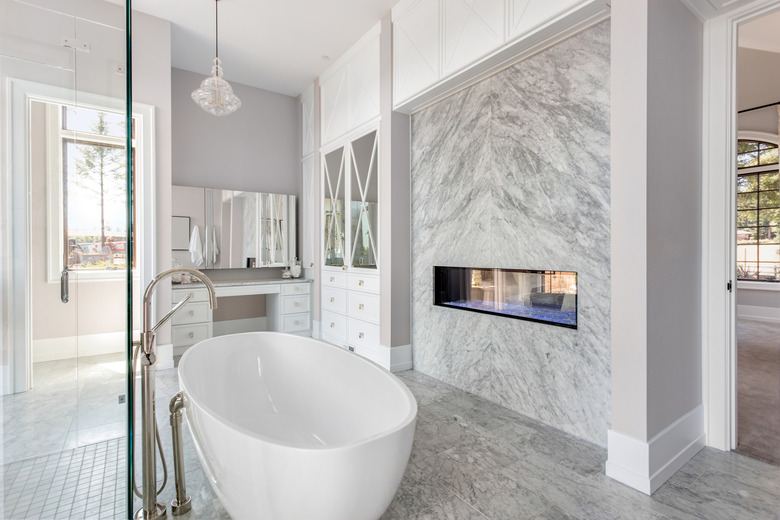What Kind Of Mortar To Use Under The Bathtub?
We may receive a commission on purchases made from links.
Before you start sweating your choices on what kind of mortar to use under a bathtub, it's important to note that not all tubs require mortar. Smaller tubs often don't, and larger tubs sometimes have a self-leveling system built-in, where little feet all the way under the tub keep it stable and supported. Some tubs are designed to not need support of any kind, but these presuppose that the floor is perfectly level.
That said, for tubs that do require mortar, there are a few options that all involve concrete to some extent. But the manufacturer's recommendations should be your first choice.
Tip
The best choice of mortar to use under the bathtub is among the most affordable — just a good old ready-mix bag of concrete will get the job done right.
Some Words of Caution
Some Words of Caution
When it comes to scenarios involving leveling compounds and mortar, according to Fixr, homeowners need to be aware that this is an advanced do-it-yourself project and doing it wrong can involve slow, extensive damage that can take months or years to be noticeable. Leaks and water damage are seldom discovered overnight, but pooling water and mold can also wreak havoc with unleveled tubs.
Having some professional guidance or an experienced helper who's been there before may help you avoid some pitfalls. But don't think a self-leveling bathtub will save you, because, as the Old House Journal explains, these are sold on the premise that your substrate is level already.
Not Recommended: Thinset
Not Recommended: Thinset
Thinset is classified as an adhesive, similar to drywall putty and concrete. It's comprised of sand, concrete and some kind of water-retaining agent, like derivatives of cellulose, but might also have latex or polymer added for bonding strength. Thinset is easy to work with but dries quickly.
Many sites appear to recommend using thinset for tub support purposes, but it's better to use for tiling. Pros don't use it for bathtub installs because it dries quickly and is less forgiving.
Pros Use Ready-Mix Concrete
Pros Use Ready-Mix Concrete
Ready-mix concrete is preferred by professionals, and it's affordable and easy to use. Mix per instructions and apply in a layer about 1 inch higher than the feet on the tub, so the tub snugs down into the mortar and squishes the excess out. The trick is to layer plastic sheeting over the mortar to prevent it adhering from the tub, making future replacement simpler.
Be careful of choosing quick-setting mortar, since you'll have little time to correct any mistakes or make adjustments. Some will set in as little as three minutes, others under an hour. A mortar that's ready for foot traffic in 24 hours is ideal, as you'll have plenty of time to confirm you've gotten it done right.
Some Final Words
Some Final Words
Ultimately, several versions of concrete will work for you, like custom mixed, and it's just about mixing it per instructions and having enough time to get the job done before the product begins setting. Make sure the brand you use is suited to the thickness you need and be sure your trusty level is nearby to make sure the tub is perfectly level both length- and width-wise. This is one instance where it's better to use a longer level, like 36 to 48 inches, as it's more precise.
Don't forget the plastic sheeting between the mortar and your tub. This is your insurance in case there are any missteps.
